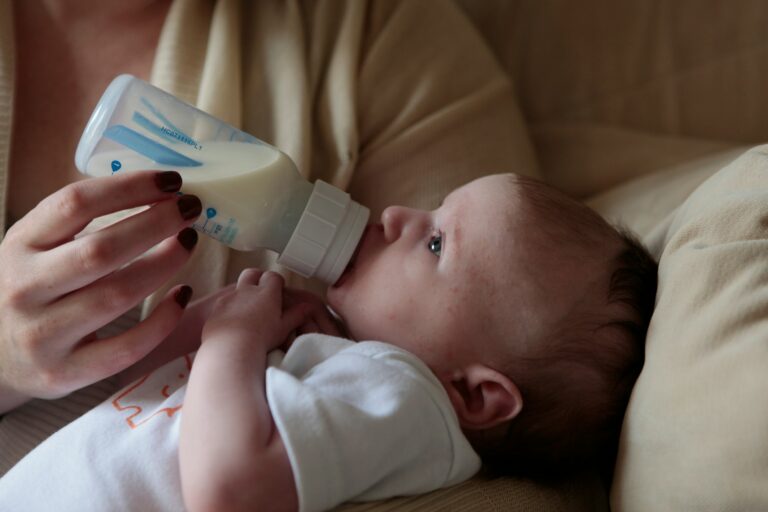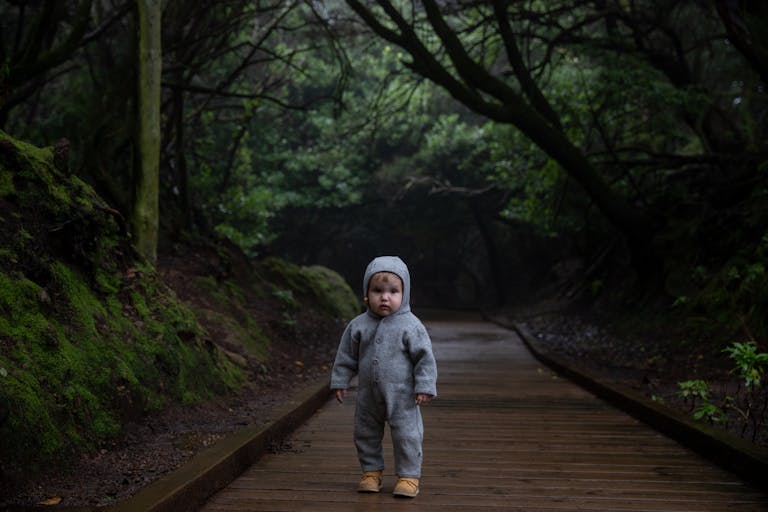It’s dusk. The day’s chores linger unfinished. And there you are, glancing down at your little one, tiny hand still curled, eyelashes fluttering closed, utterly peaceful—yet, again, baby falls asleep only at the breast. Maybe you wonder—is it normal? Is your baby truly getting enough milk? Are you the only one whose whole evening or night seems set by this rhythm? Or perhaps, does it matter if sleeping and feeding always go hand in hand? Dive into the delicate dance of hormones, comfort, biology, and habit behind this scenario so many parents experience. Let’s explore why baby falls asleep only at the breast, what it means at different ages, how it shapes sleep, and the practical and positive steps you can take for both your baby’s well-being and your own.
Why Baby Falls Asleep Only at the Breast: The Science, the Comfort, the Routine
A newborn’s world runs on instinct and biology—suckling is not just a means to nourishment but a powerful, soothing reflex. With every draw of milk, cholecystokinin (CCK)—a hormone present in breast milk—surges in your baby’s gut, creating a sensation of fullness. But more than that, CCK evokes drowsiness. Combine this with oxytocin-fueled closeness, warmth, and the ancient choreography of body contact, and it’s no surprise baby falls asleep only at the breast, sometimes within minutes.
Comfort, too, is key. The act of nursing offers more than sustenance; it regulates heart rate, breath, and emotional security. In fact, especially in the so-called “fourth trimester,” babies anchor themselves to the familiar rise and fall of your heartbeat—seeking not just calories, but reassurance. This repeated association forms a habit termed sleep association. Babies begin to link the cozy, rhythmic act of breastfeeding with sleep itself, reinforcing the pattern as a biological and behavioural loop.
What’s Normal? Baby, Age, and Sleep Patterns Unpacked
Wondering if baby falls asleep only at the breast is a worry that regularly circles every new parent group or paediatrician’s appointment. Here’s a glimpse of what science and experience show:
- Newborns (0-3 months): Their neurological system is still adapting, and the need for reassurance is profound. Feeding, comfort, and sleep blur into a continuous cycle—waking every two to three hours is entirely expected.
- Babies (4-6 months): You may notice your baby spends longer awake, but still seeks the breast for both nutrition and emotional security, particularly as evening approaches. Sleep associations—the link between certain conditions (like feeding) and drifting into sleep—are now deeply entrenched.
- Older babies (beyond 6 months): With solid foods entering the picture, the capacity for independent sleep gradually increases. Still, for many, baby falls asleep only at the breast remains an entrenched routine, especially when overtired or during periods of developmental change (growth spurts, teething).
Pay Attention to These Signs
- Frequent night wakings, about every 45 to 60 minutes, seeking the breast to transition between sleep cycles—a common but exhausting pattern.
- Short naps interrupted if nursing is withheld.
- Struggling to soothe or settle without the breast—even if a partner, rocking, or other methods are tried.
- In rare cases: slow weight gain, wet nappies fewer than four to six times daily, or falling asleep too soon at the breast, potentially reducing milk intake—these cues require close attention.
Does this sound familiar? For most, these are normal transitional phases. Only when feeding becomes consistently cut short or if your baby appears persistently drowsy and fails to thrive, should you reach out for professional help.
The Power and Pitfalls of Sleep Associations: Medical Insights
Sleep is never just sleep—it’s always wrapped up in context. Medical research acknowledges that when baby falls asleep only at the breast, the boundary between feeding and comfort blurs beautifully, but also complicates nighttime patterns. Humans, not just infants, prefer to fall asleep and wake up under similar circumstances—thus when your baby rouses between sleep cycles and finds conditions changed (for instance, not against your chest), distress ensues.
Several scientific studies highlight:
- Benefits: Nursing to sleep supports emotional bonding, stabilizes heart rhythms, reduces cortisol (stress hormone), and even assists with brain maturation during vital growth periods.
- Challenges: If feeds are too brief because the baby dozes early, their nutritional intake can dip. Parents may face fatigue as the only ones able to settle the baby, especially as repeated night waking for comfort-sucking disrupts their own recovery.
Sound overwhelming? It needn’t be. Most associations fade naturally, especially if supported gently and gradually.
Recognizing the Nursing-Sleep Link: How to Spot It
Does your baby:
- Routinely doze off while nursing, never settling otherwise?
- Cry out or protest when laid down awake?
- Rely on comfort-sucking, rather than feeding, between cycles of sleep?
- Nap poorly or wake abruptly if the environment shifts mid-sleep?
- Require the breast to resettle every time they stir at night?
Strong yes to most? It’s a signal that sleep and feeding have fused into a single, highly specific comfort zone for your child.
Steps Towards Independent Sleep — Gentle, Practical Solutions
Change isn’t an event; it’s a process. Especially when the habit is as deep-rooted as when baby falls asleep only at the breast. Here is a roadmap, backed by paediatric advice and sleep research:
1. The Art of Unlatching: Subtle Detachment Before Sleep
When your baby is nearly but not quite asleep at the breast, try unlatching and cuddling them against your body. Gradually, as this becomes less distressing, begin transferring them drowsy-but-awake to their sleep space. This can be layered—first with your touch, then with only your presence, until they develop the ability to self-settle.
Gentle fussing? Not uncommon—babies often vocalise to self-soothe. Distinguish this from high-pitch or escalating cries, which indicate your child’s need for renewed comfort.
2. Reimagining the Sleep Routine: Staging Comfort
- Alternate sides, offer a gentle pat, or incorporate rocking post-feed.
- Move nursing out of the bedroom; let feeding occur in one place, sleep in another.
- Provide a pacifier only once breastfeeding is well-established, if it’s acceptable to your family practice.
- Respect your baby’s unique temperament—some adapt to change with ease, others need slow, patient repetition.
3. Involve the Support Network
Why let midnight care burden one parent alone? Encourage a partner or family member to join bedtime rituals—whether bottle-feeding expressed breast milk, singing, or simply providing warmth. Over time, babies will often accept a soothing touch or gentle words from someone besides the breastfeeding parent.
4. Refocus Sleep Associations
Noticing baby roots for the breast but doesn’t seem calm? This can signal overstimulation or a learned craving for the act rather than hunger. Try shifting the feed earlier in the ritual, then finish with snuggling, music, or introducing a soft object (according to age-appropriate guidance).
5. Pacifiers and Alternatives
If considering a pacifier, experiment thoughtfully—different textures and designs mimic the breast with varying success. Only offer after breastfeeding is firmly in place to avoid confusion or early weaning.
Night Feeds, Milk Supply, and Parental Balance: Solutions for Sustaining Health
Night feeds support both physiological needs and emotional connection, especially before 6 months. If night weaning aligns with your family’s priorities, proceed gradually: resettle with comfort, offer more feeds during the day to compensate, and never hesitate to slow the pace if your baby is distressed.
Continue with responsive feeding to maintain your milk supply while gently guiding sleep transitions. Consistency from all caregivers, moderate routines, and self-care—hydration, balanced nutrition, and moments of rest—form the backbone of lasting wellness for both parent and child.
Medical nuance is vital—primary care providers and lactation consultants offer expertise if baby falls asleep only at the breast becomes a barrier to healthy growth or family well-being.
When Specialist Help is Warranted
Some warning signs indicate a need for timely guidance:
- Persistent poor weight gain or plateaued growth curves.
- Less than four to six wet nappies in a 24-hour period.
- Baby remains lethargic, hard to wake for feeds, or repeatedly falls asleep before transferring enough milk.
In such cases, don’t delay—pediatricians and feeding specialists are best placed to support your journey.
Key Takeaways
- For countless families, baby falls asleep only at the breast is a natural, common pattern—not a sign of failure or trouble.
- This mechanism entwines biology, comfort, and routine, bringing emotional benefits and some practical challenges.
- Recognizing strong breastfeeding-sleep associations is the first step to introducing gentle, stepwise changes—unlatching before sleep, varying bedtime routines, and involving support people can ease the transition if desired.
- Always prioritise sufficient nutrition, attentive care, and a balanced approach—your baby’s well-being and your own peace of mind are equally important.
- Trust professional resources for reassurance or intervention when needed.
- For tailored advice, practical health checklists, and free paediatric tools, download the application Heloa and empower your family journey.
Questions Parents Ask
Can falling asleep at the breast be a signal that something is wrong?
More often than not, it’s simply a mark of security—a full belly, a peaceful mind, a bond with you. But if baby falls asleep only at the breast almost immediately at each feed and doesn’t seem to get enough milk, or appears less satisfied, this could point to insufficient intake. Watch for slow weight gain, fewer than usual wet diapers, or lots of drowsiness. These signs warrant checking in with your paediatrician or a lactation consultant for an expert eye.
How do I keep my baby awake during feeds, if needed?
A sleepy feeder can be gently encouraged to remain alert using several simple tricks: feed in a softly lit room, softly sing or chat, tickle the feet or tap the back, alternate sides when drowsiness appears, and use breast compression to maintain milk flow. If dozing starts early, unlatch briefly, offer a gentle nappy change or burp, and offer the breast again. Each baby can respond differently—sometimes all it takes is a slight pause.
Should it concern me if breastfeeding is the only way my baby falls asleep?
If your family thrives, your baby’s health is robust, and your rest is sufficient, there’s no inherent problem if baby falls asleep only at the breast. Changes are only recommended if something feels unsustainable—perhaps you wish to involve other caregivers, allow your child to develop independent sleep, or take more rest yourself. Any transition will be gentler (and more successful) if carried out gradually, with lots of comfort on the way. And remember, support from healthcare providers and evidence-based digital tools can make a meaningful difference to your confidence and your baby’s development.









